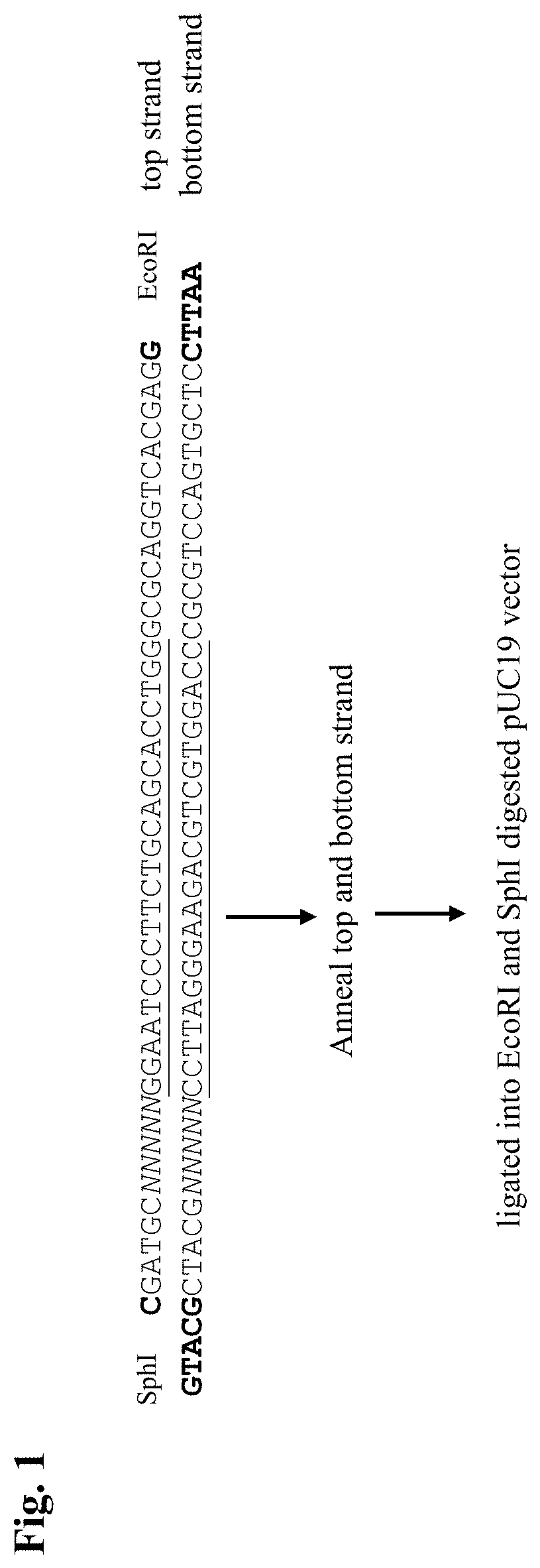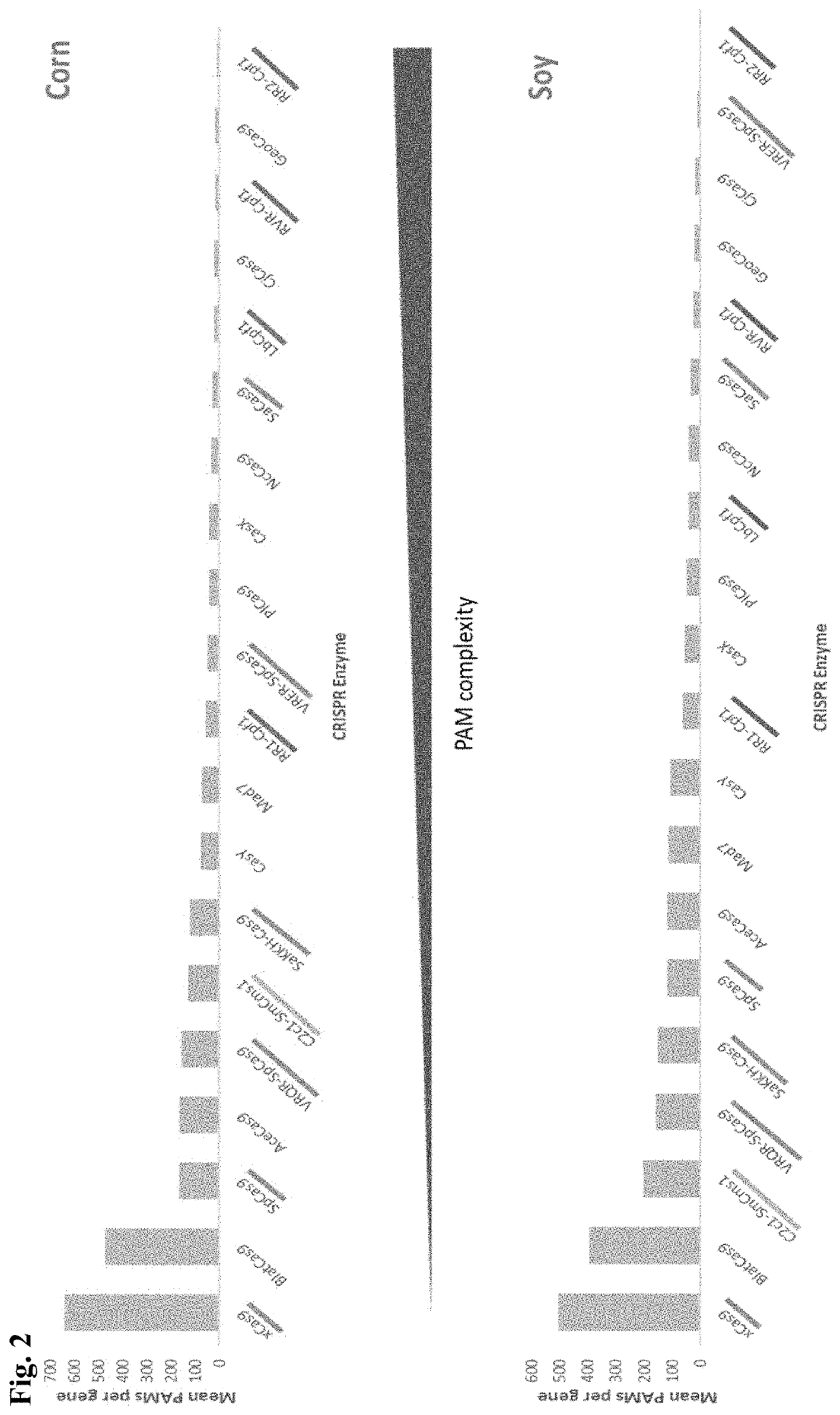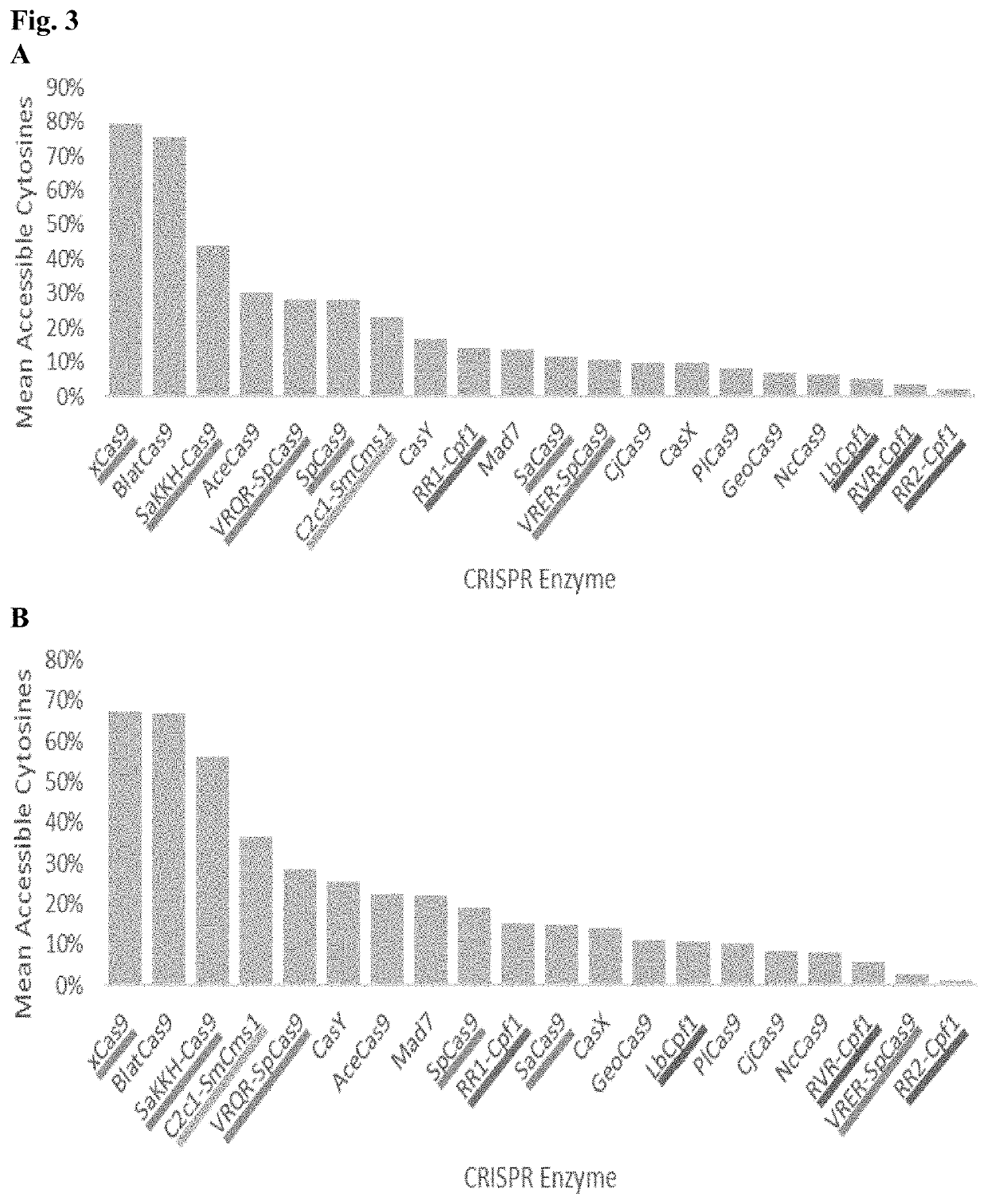Variants of cas12a nucleases and methods of making and use thereof
- Summary
- Abstract
- Description
- Claims
- Application Information
AI Technical Summary
Benefits of technology
Problems solved by technology
Method used
Image
Examples
example 1
Randomized Library
[0191]An example is provided of the method of this invention for the efficient and cost-effective generation of libraries for in vitro cleavage assays (PAM Determination Assays (PAMDA)). Two libraries were generated for protospacers 1 and 2 (see Table 1). Oligonucleotides with a randomized 5 nucleotide sequence at the 5r-end were synthesized and verified (Integrated DNA Technologies) so that each protospacer sequence occupies an equal molar ratio (Table 1). The oligonucleotides for protospacer 1 (PM0518, PM0519) and for protospacer 2 (PM0520, PM0521) were annealed by placing the mixture in a thermal cycler at 95° C. for 5 mins with a cool down for 0.1° C. / sec to 25° C. / room temperature.
TABLE 1ProtospacernameOligo numberSequencePAMDAProtospacer 1GGAATCCCTTCTGCAGCACCTGG (SEQ ID NO: 30)library 1PAMDAProtospacer 2CTGATGGTCCATGTCTGTTACTC (SEQ ID NO: 31)library 2ProtospacerPM0518 / 5Phos / CGATGTNNNNNGGAATCCCTTCTGCAGCACCTGGGCG1 top strandCAGGTCACGAGG (SEQ ID NO: 32)Protospac...
example 2
[0194]Lachnospiraceae bacterium ND2006 Cpf1 (LbCpf1) requires a highly specific protospacer adjacent motif (PAM). The ‘TTTV’ sequence occurs only about 1 in 85 bases in comparison to random nucleotides. This is contrast to the relative promiscuity of NGG for SpCas9 which occurs about 1 in 16 bases in random DNA, TTN for AaC2c1 which occurs about 1 in 16 bases in random DNA, and xCas9 / Cas9-NG whose NG PAM requirements occur about 1 in 4 bases. Cpf1 PAMs are far less abundant in corn and soy genes than Cas9 PAMs (FIG. 2). Additionally, adenines and cytosines (the current targets for base editors) are far less accessible to LbCpf1 based on its strict PAM requirement (FIG. 3).
[0195]Such stringency as that shown in FIG. 3 for the CRISPR-Cas nucleases greatly reduces the potential targets and generation of new traits. The present invention is directed to generation of CRISPR-Cas nucleases, in particular, LbCpf1 (Cas12a) nucleases having an improved ratio of accessible PAM sequences (e.g.,...
example 3
[0199]Three methods were used to test the 186 mutations:
[0200](1) An in vitro method, known as a PAMDA assay (Kleinstiver et al. Nat Biotechnol 37:276-282 (2019)), which uses purified protein and a plasmid library to test each point mutation across the library. A depletion of a library member was scored using next generation sequencing (NGS). Depletions were calculated either to the library itself (to determine absolute activity against a particular PAM) or against cleavage by wild-type LbCas12a (to determine if the mutation imparted new PAM recognition as compared to wild-type).
[0201](2) A bacterial method, known as PAM-SCALAR (Leenay et al. Mol Cell 62:137-147 (2016)), which uses a library in Escherichia coli to test binding of Cas12a mutations to the 256 possible PAM NNNN variants. It does not test cleavage, just binding. Since the mutations made were nowhere near the catalytic region, binding is expected to reflect cleavage as well (verified later in the 293T assay). The advanta...
PUM
| Property | Measurement | Unit |
|---|---|---|
| Fraction | aaaaa | aaaaa |
| Fraction | aaaaa | aaaaa |
| Length | aaaaa | aaaaa |
Abstract
Description
Claims
Application Information
 Login to View More
Login to View More - R&D Engineer
- R&D Manager
- IP Professional
- Industry Leading Data Capabilities
- Powerful AI technology
- Patent DNA Extraction
Browse by: Latest US Patents, China's latest patents, Technical Efficacy Thesaurus, Application Domain, Technology Topic, Popular Technical Reports.
© 2024 PatSnap. All rights reserved.Legal|Privacy policy|Modern Slavery Act Transparency Statement|Sitemap|About US| Contact US: help@patsnap.com










